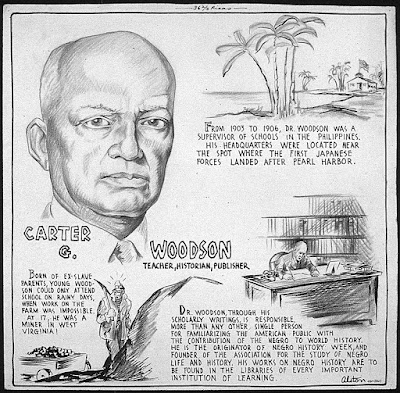 | Lewis Howard Latimer, son of George Latimer, an escaped slave, was born in Chelsea, Massachusetts, on the fourth day of September, 1848.
He was the youngest of three boys and one girl. During the Civil War, at the age of fifteen or sixteen, he enlisted in the United States Naval Service and served as "landsman" on the U.S.S. Massasoit. Honorably discharged in 1865, Lewis returned to Boston.
Despite limited opportunities for education, Lewis has an insatiable thirst for knowledge. His determination to succeed led him to become an important figure in the knowledge of this nation's electrical industry. |
This image (or other media file) is in the public domain because its copyright has expired. This applies to the United States, where Works published prior to 1978 were copyright protected for a maximum of 75 years. See
Circular 1 "COPYRIGHT BASICS" from the U.S. Copyright Office.
Blessed with a talent for drawing and a love of painting, he was hired as an office boy by the firm of Crosby & Gould, patent solicitors. From his meager earnings he purchased a secondhand set of drafting tools. Together, with some library books and the aid of some draftsmen, Lewis gradually learned enough about drafting to approach his employer and ask that he be permitted to make some drawings. Reluctantly they agreed. As it turned out, his work was so outstanding that he was given a job as a draftsman in his office. Eventually he became the chief draftsman.
Hiram S. Maxim, founder of the U.S. Electric Light Co., at Bridgeport, CN, hired Lewis as assistant manager and draftsman. Here he learned the process for manufacturing filaments. This was quite a safety improvement for the operation of the electric light.
Lewis, also a gifted amateur poet, married Mary Wilson on December 10, 1873. For the occasion, Lewis wrote a special poem entitled: "EBON VENUS". This poem is one of many that appear in his book of poetry, "Poems of Love and Life". The Latimers had two daughters, Jeanette and Louise.
Lewis latimer executed the drawings and assisted in preparing the descriptions required to prepare the applications for the telephone patent of Alexander Graham Bell. The patent was issued in 1876.
One of Lewis Latimer's inventions, patented on February 10, 1874, dealt with "Water Closets for Railroad Cars."
In 1879, Thomas Edison had invented the incandescent electric lamp. Latimer studied all aspects of electricity. He carried on experiments which resulted in improvements on the incandescent lamp.

The Latimer lamp then resulted in wide use for some time.
The brilliance, taken for granted today, was made possible by the pioneering work of men such as Thomas Edison and Lewis Howard Latimer. On January, 17, 1882, Lewis received what was probably his most important patent, a "Process of Manufacturing Carbons." His methodfor producing carbon filaments resulted in a superior filament that lasted much longer than others. Soon after, Latimer was called upon to install some of the first incandescent electric light plants in New York City. He installed electric lighting in the Equitable Building, the Union League Club of NYC, and other buildings. He proceeded to install electric lighting in Philadelphia and Canada, where he learned to speak French in order to explain his orders to the Canadian workers.
In 1881, Latimer was sent to London to set up an incandescent lamp department for Maxim-Weston Electric Light Company. In 1890, he was transferred to the legal department, where he was of tremendous value to Edison in defending his patents in court as an expert witness. More often than not, his expert testimony won the cases for Edison.
Lewis Latimer was awarded many other patents, became involved in teaching immigrants English and mechanical drawing at the Henry Street Settlement, and author of a book on incandescent lighting. He also has a talent for painting and was associated with the 1870's Civil Rights Movement. Richard Greener and Fredrick Douglas were some of his associates. In 1918, he became a member of the Edison Pioneers, an organization consisting of men associated with Thomas Edison prior to 1885.
Lewis Latimer retired in 1924 at the age of 75. He passed away at his home in Flushing, New York on December 11, 1928, at 80 years of age.
A public school in Brooklyn, NY now bears his name. It is known as The Lewis H. Latimer School. This honor was bestowed upon Mr. Latimer on May, 10 1968. The New York City Authority also held a dedication ceremony for the Lewis H. Latimer Gardens on June 8, 1971. The gardens are located at 35th Avenue and Linden Place in Flushing, NY. Latimer's grandaughter, Winifred L. Norman, Ph. D, is in the process of converting his home, in Flushing NY, into a museum.
Bibliography
Edison Pioneers, Tribute to Latimer, New York, 1928
Latimer, L. H., Incandescent Electric Lighting, New York, D. Van Nostrand, 1890
Negro History Associates, The Story of Lewis Latimer, New York, 1964
Ploski, H.S., and Brown, R.E., Negro Almanac, New York Bellwether Publishing Company, 1967
Patents
Feb. 10, 1874 - A water closet for railroad cars---------#147,363
1876 - Completed drawing for patent for Alexander Grahm Bell's Telephone
Sep. 13, 1881 - Improvement on electric lamp--------#247,097
Jan. 17, 1882 - Process for manufacturing carbon filament-----#252,386
Mar. 21, 1882 - Arc light globe support-------#255,212
Jan. 12, 1886 - Patent for apparatus for cooling and disinfecting-----#334,078
Aug. 25, 1895 - Device for locking hats, coats, and umbrellas on hanging racks-----#557,076
Technorati tags:
Public Domain Clip Art and
clip art or
public domain and
Lewis Howard Latimer or
Electric Light or
Global Warming: NASA study suggests extreme summer warming in the future VIDEO and
Benjamin Banneker and
Gold Nanoparticle Probes May Allow Earlier Cancer Detection VIDEO




































